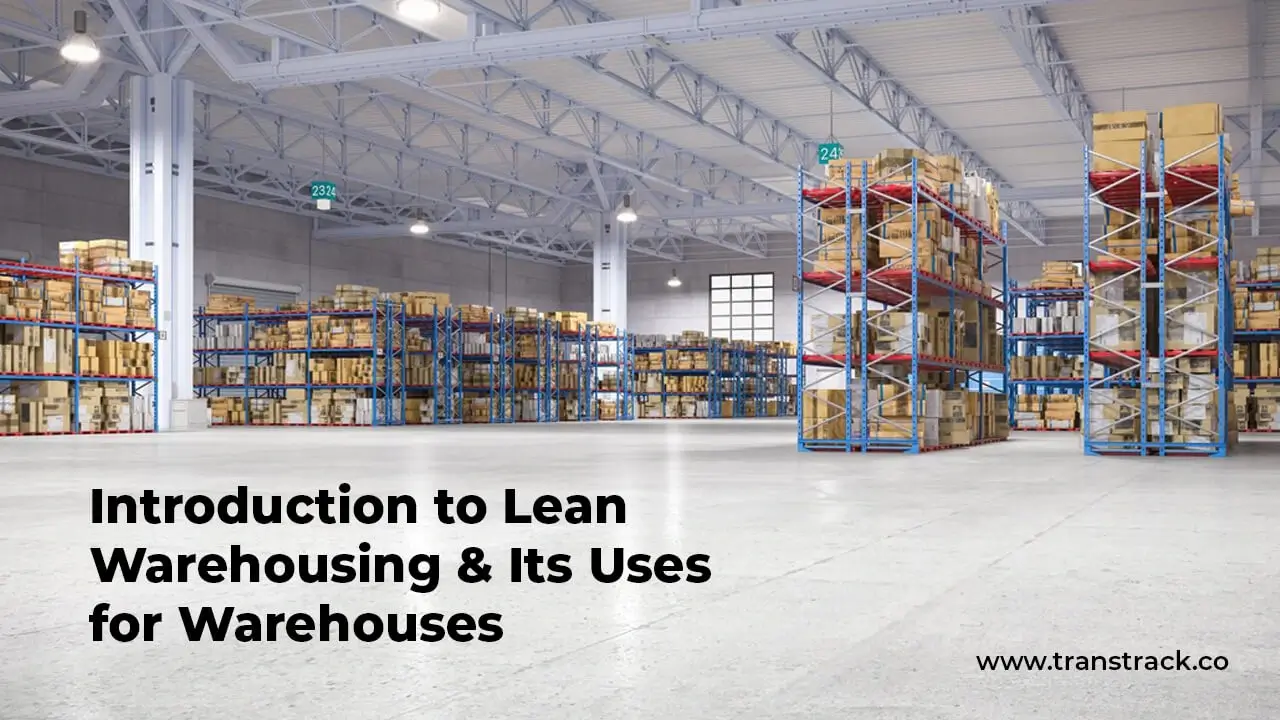Introduction to Lean Warehousing & Its Uses for Warehouses
Posted on September 1, 2023 by Nur Wachda Mihmidati

Facing various obstacles in managing warehouses, a lean approach. We are ready to share all the necessary information about the lean warehousing concept, from its advantages and underlying principles, to best practices that can be followed and beyond.
Not only that, we will introduce you to our company’s automated storage solution technology and advanced inventory management systems. All of this is designed to help you implement a lean approach to your warehouse operations. Let’s go deeper in this TransTRACK article!
What is meant by lean warehousing?
Lean warehousing is a warehouse management strategy that aims to eliminate activities or processes in the warehouse that use resources but do not produce additional value. The main goal is to reduce waste and increase efficiency.
This concept was originally developed in the manufacturing sector, especially in the automotive industry by the Toyota company. The main focus is reducing waste and increasing productivity.
For example, let’s look at a manual fetch process. In manual picking, the warehouse operator must refer to the picking list and find the picking location manually. Although it uses resources such as time and effort, this process does not add value to customers.
To overcome the waste of resources that arises from manual picking, implementing a lean warehousing approach can mean utilizing automation solutions in the picking process.
Implementation of Lean Warehousing
The 5S concept is a basic element of all lean warehousing approaches, including within the scope of lean warehousing.
These principles have the potential to help create an efficient, well-organized, and safe work environment when implemented in every facet of warehouse operations — from the layout of the warehouse space to the picking methods and packing processes.
The principles of 5S (and other traditional Japanese principles) include:
1. Sort and Organize
The Classification Concept indicates that every item in the warehouse must be assessed thoroughly to ensure its usefulness. Items that are old, in excess, or rarely used should be written off.
In applying the Classification principle, the steps taken are to eliminate all items that are rarely used and remove items that are not needed in the warehouse. This includes equipment and supplies that are no longer in use.
If you have stock of items with low turnover and have been stored for a long time, it is wise to store them in a separate storage area. This aims to provide more space in the main warehouse. This way, it will be easier for warehouse staff to find the items they need, optimizing operational efficiency.
2. Set in Order
The Arrange in Order principle states that items should be placed in specific locations based on how often they are used, ensuring their accessibility when needed.
In applying the Arrange in Order principle, arrange your inventory carefully so that it is easy to find and reach.
For example, you can adopt an ABC analysis approach to group items based on their value and turnover rate.
Place items that move frequently (category A) in easy-to-reach areas, such as near delivery zones. Meanwhile, slow-moving goods (category C) can be stored in locations that are rarely used, such as on the mezzanine or back corner of your warehouse.
3. Shine and Clean
When applying the Shine and Clean principle, pay attention to the following:
Establish a regular schedule for cleaning and organizing activities: Create a regular plan for sweeping, dusting, and cleaning and maintaining floors. Also, make sure to clean surfaces and remove trash regularly. You can assign warehouse employees or consider using professional cleaning services.
Make use of shelves, cupboards, and bins: Make sure items are organized and easy to reach. Implement a label or code system
Standardize Processes
Standards (Seiketsu) The Principle of Standardization states that it is necessary to establish and implement consistent processes, procedures and guidelines to maintain efficiency.
In applying the principle of Standardization, pay attention to the following:
- Record in writing the processes and procedures used within the warehouse: This involves steps from start to finish in the workflow, inventory management, order fulfillment, goods receipt, picking, packing process, all the way to shipping. Note any variations or inefficiencies in the process.
- Explore and analyze documented processes, identifying areas where best practices can be applied: This step involves finding the most efficient and effective ways to carry out tasks, reducing waste and increasing overall productivity. Compare it to industry standards and seek input from employees who play a direct role in the process.
Sustain Through The Process
The Sustain Principle states that the four previous principles (Classification, Orderly, Bright, and Standard) must be maintained consistently in order to build a culture of continuous improvement.
In applying the Maintenance principle:
- Conduct regular audits: Identify areas that need improvement and ensure that established standards are maintained.
- Provide ongoing training: Continuously reinforce the importance of 5S principles and ensure that all warehouse staff understand how to apply them correctly.
- Warehouse employee appreciation: Reward staff who maintain high standards. This can increase their morale and job satisfaction, as well as encourage other fellow operators to follow a good example.
Benefits of Implementing Lean Warehousing
Implementing the lean warehousing concept can reduce waste, eliminate unnecessary steps, and increase productivity and operational efficiency in your warehouse environment.
Key benefits of a lean warehousing approach include:
Increase Efficiency
Lean warehousing is focused on eliminating wasteful warehouse activities, such as excess production and holding unnecessary inventory. By identifying and eliminating activities that do not add value, efficiency levels can be increased.
Strengthening Employee Safety
A lean warehousing approach prioritizes work environment safety by leveraging warehouse automation to avoid the risks of working at heights or in hard-to-reach areas, reducing chaos and eliminating potentially dangerous work practices.
Increases Employee Morale
The Lean philosophy encourages employee participation and empowerment. By involving a team of employees in continuous improvement efforts, you can stimulate engagement and enable team members to feel valued and motivated to contribute to the warehouse’s overall success.
Conclusion
In general, implementing efficient lean warehousing is an approach that has the potential to provide significant benefits for improving your business performance. This can reduce expenses and improve efficiency in various aspects.
However, there are several obstacles that need to be taken into account when implementing it. You can overcome this obstacle through careful planning and involving commitment from all levels of the organization.
To increase efficiency in shipping goods, companies can use Fleet Management System (FMS) technology such as TransTRACK, which helps in monitoring and managing vehicle fleets in an efficient and effective way.
Through TransTRACK, companies can obtain accurate and real-time information about vehicle position, vehicle and driver condition, as well as monitor fuel usage. This will help companies optimize delivery routes, reduce operational costs and improve overall operational efficiency.
Recent Post
Topic :
 Bahasa Indonesia
Bahasa Indonesia









